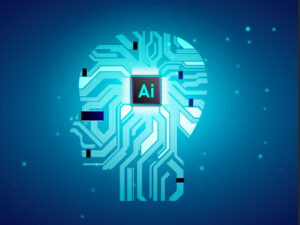Five Artificial Intelligence Issues To Consider
Artificial intelligence (AI) is rapidly transforming the world as we know it. From chatbots and virtual assistants to self-driving cars and intelligent robots, AI has significantly impacted various industries and is poised to revolutionize many more soon. Here, we take a closer look at what the future of AI holds, including five artificial issues to consider.

Integrating AI And The Internet Of Things
One of the major trends in AI is the integration of machine learning with the Internet of Things (IoT). IoT refers to a network of physical devices embedded with sensors, software, and other technologies that allow them to collect and exchange data over the internet. By combining machine learning with IoT, we can create intelligent, connected systems that can learn from data and make decisions based on that information. This evolution could lead to the development of smart homes, cities, and even countries that can automatically respond to changing conditions and optimize their performance.
AI Interactions Using The Human Voice
One of the major trends in AI is the integration of machine learning with the Internet of Things (IoT). IoT refers to a network of physical devices embedded with sensors, software, and other technologies that allow them to collect and exchange data over the internet. By combining machine learning with IoT, we can create intelligent, connected systems that can learn from data and make decisions based on that information. This evolution could lead to the development of smart homes, cities, and even countries that can automatically respond to changing conditions and optimize their performance.
Healthcare Possibilities With AI
The healthcare industry is another area AI might transform. With the ability to process large amounts of data and identify patterns and relationships, AI has the potential to revolutionize the way we diagnose and treat diseases. For example, you can use AI algorithms to analyze medical images, such as X-rays and MRIs, to identify abnormalities and diseases much faster and more accurately than a human doctor. Additionally, medical professionals can use AI to analyze patient data and medical histories to provide personalized treatment plans and improve patient outcomes.
AI In The Financial Sector
The use of AI in the financial sector is also rapidly growing. For example, financial professionals can use AI algorithms to analyze vast amounts of data and predict the direction of financial markets, helping investors make more informed – and profitable! – decisions. Other financial professionals can use AI to detect and prevent financial fraud, reducing the risk of financial losses. Moreover, AI-powered “advisors” already provide financial advice to consumers, making it easier for people to manage their finances and plan for their future.
In the coming years, we can expect AI to become more integrated into our daily lives. AI-powered virtual assistants will become more advanced and sophisticated, able to perform more tasks and make more informed decisions. Furthermore, the development of autonomous vehicles will significantly reduce the number of car accidents caused by human error, making roads safer for everyone.
Concerns And Risks With AI
Despite all the benefits of AI, there are concerns about its impact on society. One of the five artificial intelligence issues is job displacement, as AI algorithms can automate many tasks humans previously performed. This evolution will lead to significant changes in the job market, as people will need to learn new skills and adapt to new roles. However, it is essential to note that AI will also create new job opportunities, such as data scientists and AI engineers, who will be responsible for developing and maintaining these systems.
Another concern is the potential for AI algorithms to perpetuate bias and discrimination. Because we train AI algorithms based on data, they can only be as unbiased as the data used to teach them. In other words, the AI algorithms will also be biased if the training data contains bias. To mitigate this risk, we must carefully consider the data used to train AI tools and take steps to ensure that it is diverse and representative of the population.
Summary
In conclusion, the future of AI is full of promise but also comes with significant challenges, including the five artificial intelligence issues discussed above. The integration of AI into everyday life, the development of general AI, and the need to address ethical and moral questions are just a few of the critical issues to address. However, by working together and taking a responsible, proactive approach, we can ensure that the future of AI is bright and that the technology benefits all.
To learn more about AI, consider participating in a K2 Enterprises training course.
